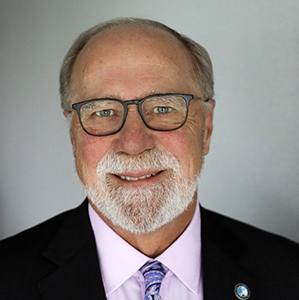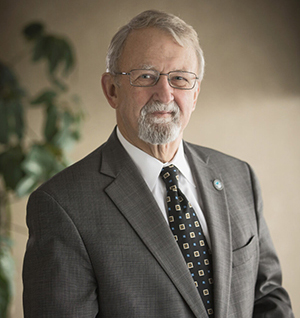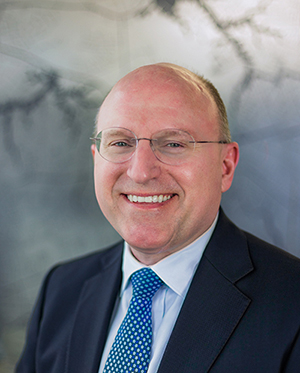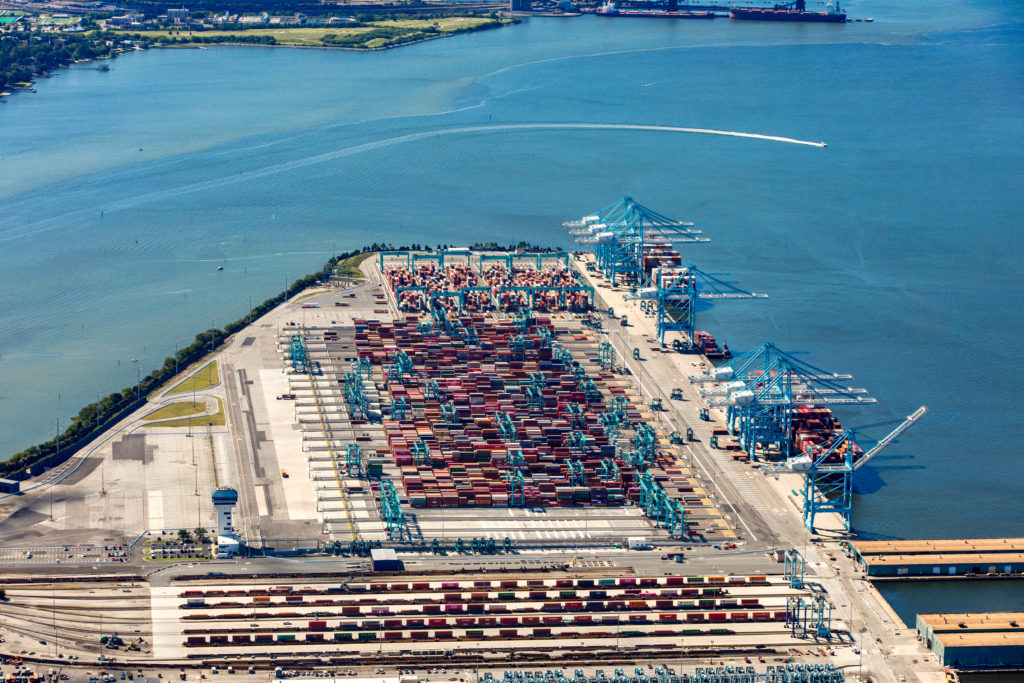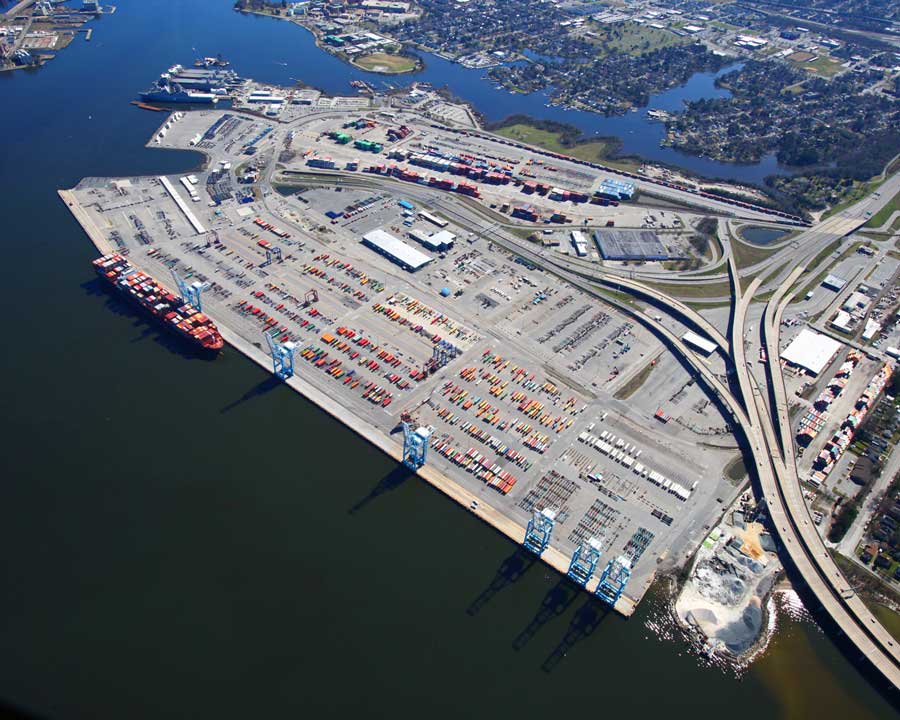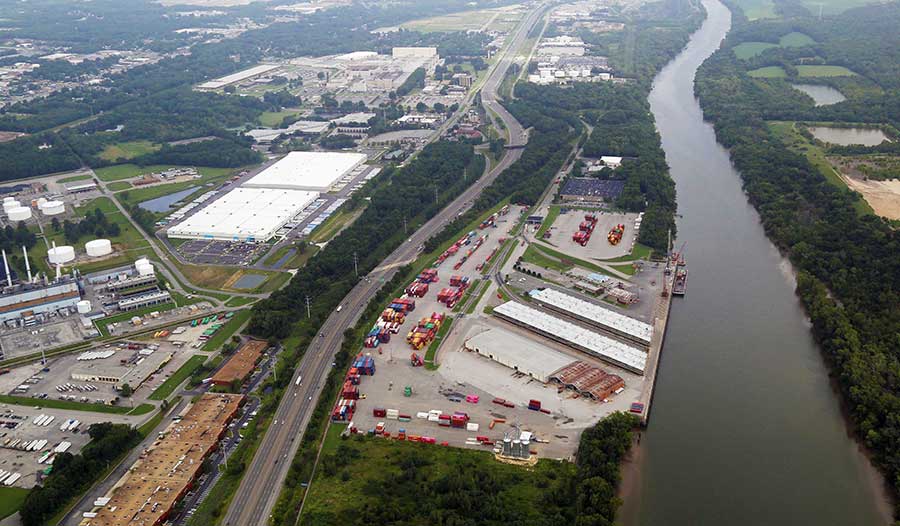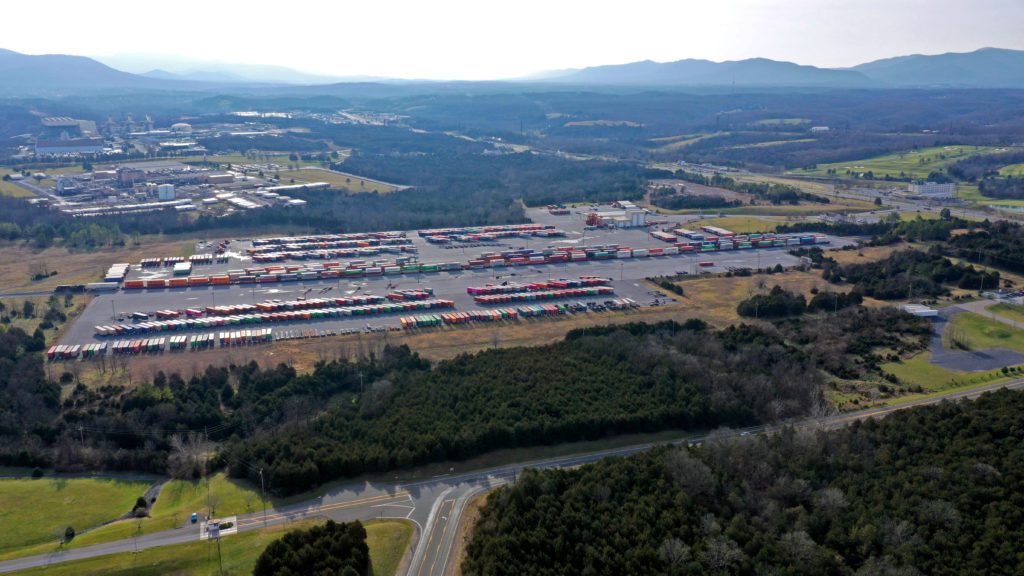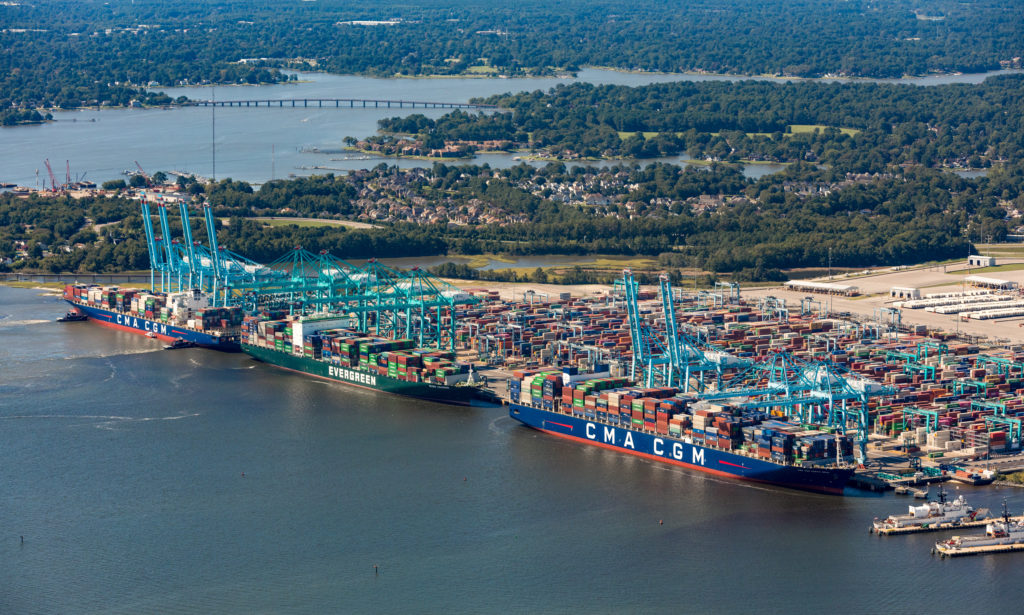On May 1, Virginia’s minimum hourly wage will rise to $9.50 for most non-farm jobs, and for many business owners, that won’t be too disruptive.
But the state’s upcoming Jan. 1, 2022, mandated raise to $11 “is of greater concern” to businesses, says Eric Terry, president of the Virginia Restaurant, Lodging and Travel Association. VRLTA represents the state’s hard-hit hospitality sector, which is still operating under state pandemic restrictions issued more than a year ago.
Terry’s organization successfully lobbied the General Assembly last year to delay by five months the Jan. 1, 2021, implementation of the $9.50 minimum wage, a $2.25 per hour increase from the current federal rate of $7.25.
During this year’s legislative session, VRLTA and other business groups “asked for the same thing again,” Terry says, requesting to postpone the $11 minimum wage hike until May 2022, but the legislature didn’t oblige.
“We supported a bill this past session to delay the minimum wage, knowing many Virginia small businesses are struggling to recover from the pandemic and will find it challenging to hire and rehire individuals if it’s more expensive to do so. Unfortunately, the legislation was defeated in a House subcommittee,” says Nicole Riley, Virginia state director for the National Federation of Independent Businesses. “As small businesses slowly begin to recover, we’ll remind legislators of the financial impact those same employers will face as the minimum wage is increased. Hopefully, they’ll take action to help small businesses.”
In 2020, Virginia’s new Democratic-majority General Assembly passed legislation to incrementally increase the state’s minimum wage to $12 an hour by Jan. 1, 2023. This May’s increase to $9.50 is the first of three annual hikes. The law also created a path for Virginia to raise the state minimum wage to $13.50 in January 2025 and $15 in January 2026, if the General Assembly authorizes those increases before Jan. 1, 2024.
Del. Jeion Ward, D-Hampton, the bill’s chief sponsor, expects nearly 200,000 Virginians to benefit from the raise to $9.50. “I believe workers have waited far too long to see an increase in the minimum wage,” she says. “Far too many adults are working two or three minimum wage jobs just to barely make ends meet. Was it a fair compromise? After months and months of research and groundwork, I believe it’s the best we could do.”
On the national level, recent attempts to raise the minimum wage to $15 have stalled, with both chambers rejecting attempts to include such a hike in the $1.9 trillion American Rescue Plan passed in March.
These measures are general responses to the Fight for $15 grassroots political movement, which has led to strikes and unionization efforts by service workers during the last decade.
Business advocacy groups have typically said such hikes would create undue burdens on already-struggling small businesses and would have the unintended effect of cutting jobs and hours. A Congressional Budget Office study released in February found that raising the federal minimum wage to $15 by 2025 would result in raises for 27 million workers and bringing 900,000 Americans out of poverty, but the change would also see 1.4 million jobs lost, mostly affecting younger, less-educated workers.
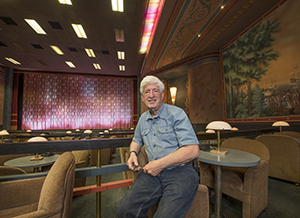
“There’s a lot of concern about whether it’s the right time to raise the minimum wage when we’re trying to get businesses back on their feet,” Terry says. “It’s taking so long to recover.”
However, for people who earn minimum wage and are coping with cut hours and loss of income during the pandemic, the state’s incremental approach may be too little, too late.
Financial strain
Consuelo Grandados, a 43-year-old El Salvadoran immigrant, works at George Mason University as a contracted janitor. Her husband, son and daughter were laid off from restaurant jobs during the pandemic, so Grandados is the sole breadwinner for their household of six.
“Right now, I’m the only one who’s working,” Grandados says through an interpreter. “I moved here so I could provide for them. My expectations were to find a good job with benefits. Unfortunately, that was not the case.”
Grandados, who arrived in Virginia two decades ago as a single mother of four, has worked for the same janitorial contractor for the past 10 years, and until recently was making $10.50 per hour. A local service workers union representing janitors, including Grandados, has filed four unfair labor practice charges against the contractor with the National Labor Relations Board. Students, staff and faculty members have put pressure on the university to adopt a stronger contracting policy that protects workers like Grandados. In March, the union held a car caravan protest that made local headlines.
“When we were in the newspaper, they promised me a raise of $1.50 an hour,” Grandados says, so now her hourly wage is $12. That makes a difference, she says, but it’s still not enough to pay rent for her apartment in Springfield, while covering basic expenses and hospital bills for three family members, including her stay when she had COVID last year.
“There are a lot of workers like me who are struggling to make ends meet and believe Virginia needs to do more to provide,” she says.
Grandados expects she’ll have to move somewhere cheaper soon.
High stakes
On the other end of the minimum wage debate is Fred Schoenfeld, owner of Portsmouth’s Commodore Theatre, an art deco-style first-run movie theater that offers fine dining. The theater is open now, but Schoenfeld last paid himself in February 2020.
He’s very concerned about the raise to $9.50 per hour because his 16 employees are mostly teenagers who are in their first jobs and are paid $7.25 while they’re trained, and many earn less than $9 an hour. “Some are making $10, $11, $12 an hour, but only a few,” he says. “No one is a head of a household.”
Schoenfeld says the wage hike means he’ll have to cut hours and raise prices, and even then, it will be difficult to manage because movie studios take about 50% of his door income, regardless of amount. He anticipates his payroll will go up by about 25% this month, and right now, “I don’t have that money coming in.”
He doesn’t believe there should be a government-mandated minimum wage, saying that pay should instead be based on market standards. No one over the age of 25 should be working in a minimum wage job, Schoenfeld says. “Either … you don’t have the mental ability to progress any farther, or you’re lazy.”
Chris Savvides is the owner of Black Angus Restaurant, an old-school steakhouse on Virginia Beach’s Oceanfront that opened in 1952. The pandemic has been difficult for his business, Savvides says.
The first round of Paycheck Protection Program funding “kept us alive,” he says, and there was some tourism last summer that helped — “a sugar high,” Savvides calls it. But “things got very dicey around November. We lost all of the holiday parties, and we were in a freefall. There was no gas in the tank in January.”
The $9.50 minimum wage increase won’t be an immediate disruption to his business, because “the reality is, in my particular market, if I want someone to show up for an interview, I have to pay $9 [an hour] minimum, and to get them to stay, at least $10.”
However, a $15 minimum wage would hurt his business, Savvides says. If a young, inexperienced worker automatically gets that wage, he says, a seasoned server making $16 an hour won’t be happy and will want a raise, creating a domino effect.
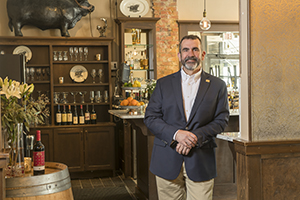
Schoenfeld says he expects he will receive similar raise requests from his higher wage earners, and he’s not sure what his theater will do when the minimum wage rises to $11 an hour in January 2022. “I don’t want to close up, but I don’t know what other choice I have.”
The tip quandary
Another wrinkle for restaurants: Servers’ wages are based partly on tips and a base salary of $2.13 per hour. Total earnings must equal the $7.25 minimum wage under state and federal law, and employers must cover the difference if tips are too low. Many restaurants rely on “tip credits” currently allowed under the U.S. Fair Labor Standards Act that lets employers count an employee’s tips toward their payment obligations.
Some Democrats, including President Joe Biden, have spoken in favor of getting rid of tip credits amid the larger minimum wage discussion. They say the rule creates too much economic uncertainty for servers and other workers who rely on tips, and that some employers skirt the rules and short their workers. Some restaurant owners, though, say it’s the one thing keeping them afloat.
“You know what would close me tomorrow afternoon?” asks Savvides. “Getting rid of the tip credit. I’d probably [shift] to some kind of virtual kitchen. Prices will go up, and hours will go down. There’s no pot of gold in the back room.”
U.S. Rep. Bobby Scott, D-3rd District, is the chief sponsor of the federal Raise the Wage Act, which would increase the federal minimum wage to $15 per hour by 2025. The U.S. House of Representatives has passed the bill, but it has not yet been taken up by the U.S. Senate.
The longtime Virginia congressman says tip credits “should go away,” in part because “compliance is very difficult.” At restaurants that don’t bring in as many tips — such as a Denny’s franchise, Scott offers as an example — “the employer is supposed to make it up. Experience is, that doesn’t always happen,” he says. “The experience is that tips don’t go down when there is one fair wage.”
However, Savvides says wage theft is not common in restaurants and that violations often stem from tip-sharing with back-of-house employees, which inexperienced restaurant owners may not know is prohibited. “It’s not the pervasive dilemma or crisis that it’s being made to be,” he says.
Terry, the head of the restaurant and lodging association, says that, in discussing Virginia’s minimum wage discussion with state legislators, his organization fought hard to keep tip credits in place because members were most concerned about the potential costs to their businesses.
A new model
Unlike many restaurant owners who say their profit margins will not be able to withstand a sharp increase in wages without tip credits, restaurateur Kevin Healy says he’s figured out an alternative solution. Healy owns the Housepitality Family restaurant group, which includes eight Richmond-area restaurants and a pop-up concept.
After reopening his restaurants last year following the pandemic shutdown, Healy instituted a no-tip model with a 20% service charge. His restaurants also have a touchless order and payment model, which means fewer servers can cover more tables at a time.
“Our minimum starting salary is $12 an hour,” Healy says, and because some customers leave tips anyway, “those tips are spread evenly among hourly workers.”
The outcome — between base salary, service charges and tips — raises most employees’ pay to $23 to $28 per hour, Healy says. “A certain population of servers won’t like it,” he notes, because they look fondly upon nights with $400 tips, which is less likely under Healy’s model.
But because servers, bartenders and kitchen staffers are making similar wages, “we have fewer staff that are leaving, with more sales on average,” Healy says, and “we’re able to retain better cooks.”
He hopes to raise his workers’ base hourly wage to $15 an hour, but overall, Healy says, “we feel like we’re solving the problem” of razor-thin profit margins and “the unlivable wage.”
Other employers are already offering a $15 an hour minimum wage in Virginia, such as the University of Virginia and Sentara Healthcare.
“From a business perspective, one of the important things is that we have great talent in the commonwealth,” says Becky Sawyer, executive vice president and chief people officer for Sentara Healthcare, which employs more than 28,000 people and implemented its $15 per hour minimum wage increase this May. “We have to be prepared to do something to get the talent to Virginia, and once they’re here, to keep them. Other organizations, national companies, are offering $15 an hour.”
Sentara began raising wages incrementally in 2017, when its minimum wage ranged from $7.35 to $11.30 an hour depending on the market it served. That year, Sentara raised minimum hourly wages to $10 to $12 by market. The health system also offers annual merit pay increases.
While Sentara already had a steady stream of applicants, the wage hikes helped increase employee retention, Sawyer says.
In states with higher minimum wages, Scott says, people remain in their jobs longer, saving employers the cost of recruiting and training new workers. “The recruiting process is very expensive. It is much more cost-effective to pay a person a reasonable salary.”
On Jan. 1, 2020, U.Va. raised its minimum wage to $15 for university employees and most full-time contractors, covering approximately 96% of its 28,000 employees. The university estimated the increase cost roughly $4 million. The university froze hiring in April 2020 due to the pandemic, and its number of employees has remained relatively flat over the past year.
“U.Va. was able to follow through on our commitment to the living wage of $15 per hour, so that was fully implemented as planned,” spokesman Wesley Hester says. “We did not have to cut or freeze other expenses in order to implement this change.”
In April, Kings Dominion’s parent company, Ohio-based Cedar Fair Entertainment Co., announced the theme park would raise its base hourly wage for 2,100 seasonal employees to $13 per hour when the amusement park reopens in May, an increase from its previous $9.25 base rate.
At the grassroots level
In spite of pandemic-related financial concerns and narrower profit margins, smaller employers also are raising wages and, in some cases, are taking the lead. In Harrisonburg and Rockingham County, a couple dozen businesses have received “Living Wage Certification” from the Richmond-based Virginia Interfaith Center for Public Policy, which started the program in 2018 as a statewide effort to raise wages.
The center’s certification program works with businesses in Charlottesville, Richmond and Northern Virginia, as well as Harrisonburg. Wage levels differ by locality; based on the city of Alexandria’s standards for contract employees, $17.50 an hour is considered a living wage in Northern Virginia, while $15 is the benchmark in Harrisonburg.
Paloma Saucedo started Harrisonburg-based Arcoiris Day Care in 2019, a business that has received the organization’s top certification level. As a social justice activist, Saucedo knew she wanted to pay her two employees a decent wage and started by paying them $11 an hour. Today, she pays them $15 an hour, even though she couldn’t always pay herself during the early months of the pandemic when her business was shut down.
“It was difficult financially. Fortunately, I have a spouse who works in the health care field as an interpreter,” she says. “I had his support,” and some of her customers were able to continue paying her day care service during the shutdown. That money went to her employees, she says.
A Mexican immigrant who came to the U.S. undocumented, Saucedo’s first job after obtaining her green card paid $10 an hour, and she and her two older children relied on the local food bank.
Today, she sees other Shenandoah Valley residents — especially Black and Latino people, who earn less than white people, according to demographic studies — in similar situations. Even in her house, her 19-year-old daughter is working while taking a gap semester from college but isn’t earning much. “She wants to move out, but she can’t [afford it],” Saucedo says.
Grassroots organizations are leading the living wage effort, she adds. “It’s kind of unfortunate that it had to be us, the little ones, to start it. It needs to be done. It’s just going to be part of the society. That’s what I want to see happen.”
During initial negotiations on Virginia’s minimum wage increase in 2020, some business groups and Republicans backed regional scales, noting that the cost of living differs widely across the state. In Danville, a two-bedroom apartment costs an average of $700 a month, compared with Fairfax County, where monthly rent averages $1,665 for two bedrooms, according to Sperling’s BestPlaces, a data analysis company focusing on local demographics.
In February 2020, Republican state Del. Joe McNamara, who owns two ice cream shops in the Roanoke Valley, backed a regional wage approach. “Arlington is not Abingdon,” he said on the House floor, arguing that an across-the-board minimum wage increase could harm businesses in rural, less affluent areas. Ultimately, state lawmakers settled on an incremental approach that delayed the minimum wage from reaching $15 until 2026.
According to a 2019 study conducted by The Commonwealth Institute, a Boston nonprofit devoted to advancing businesswomen in leadership positions, approximately 1.27 million people in Virginia would benefit from the state raising the minimum wage to $15 by 2024, including 774,000 full-time workers, 751,000 women and 620,000 workers of color. The report also says that national studies show “little to no job losses” in states that raised the minimum wage.
Although the federal minimum wage remains at $7.25, the same rate it’s been since July 2009, 29 states and Washington, D.C., have set a higher minimum wage, and 45 localities have implemented rates higher than their states’ minimums. In Virginia, cities and counties are not allowed to raise wages unilaterally under the Dillon Rule.
In April, President Biden signed an executive order to increase federal contractors’ minimum wage to $15, up from $10.95, which was enacted in 2014. Biden’s order will also eliminate the tipped minimum wage for federal contractors, which allows employers to pay $7.65 per hour if employees’ tips let them reach the $10.95-per-hour wage. He also called for Congress to pass a $15-per-hour minimum wage in his first joint address, although eight Democrats previously voted against a minimum-wage amendment to the $1.9 trillion American Rescue Plan.
NFIB says a $15-per-hour minimum wage would mean 1.6 million jobs lost nationwide, including 57% at small businesses, and nearly a $1 trillion reduction in real GDP.
But for Consuelo Grandados and other workers, an increase to $15 an hour would be meaningful. “I would really like to earn that,” she says. “The difference would be really important for me to pay bills. Before the pandemic, we were all working, but afterwards, my family members were unable to do their jobs. They are hoping to find work.”


